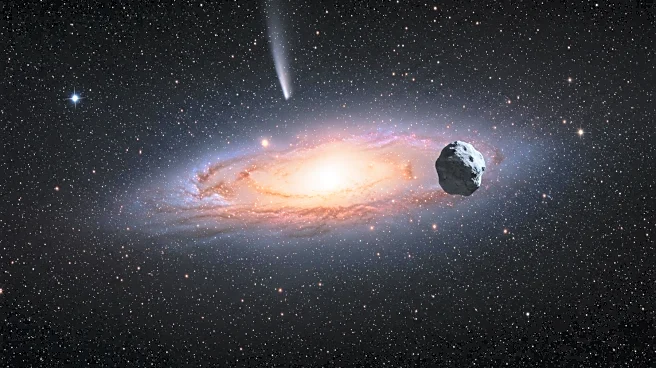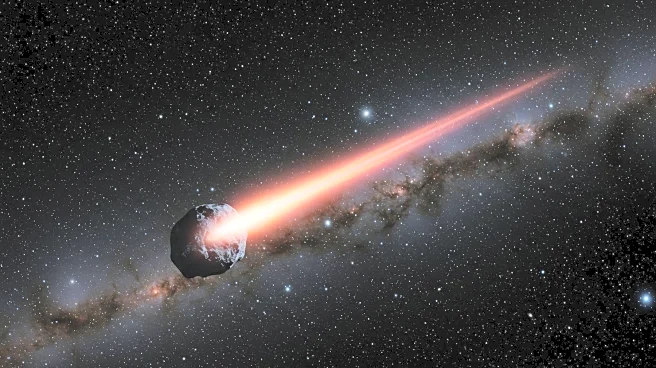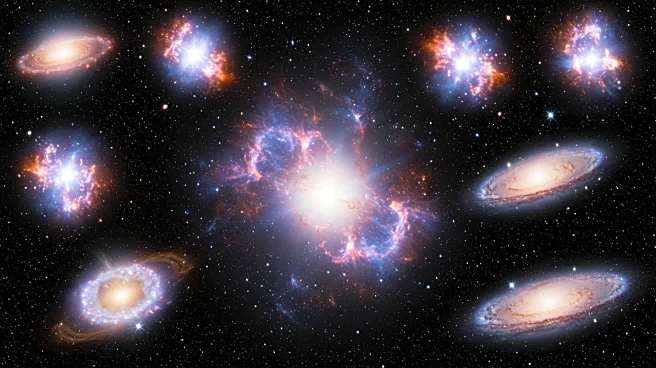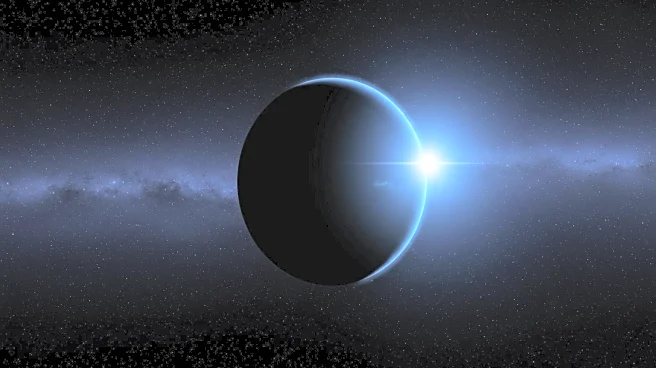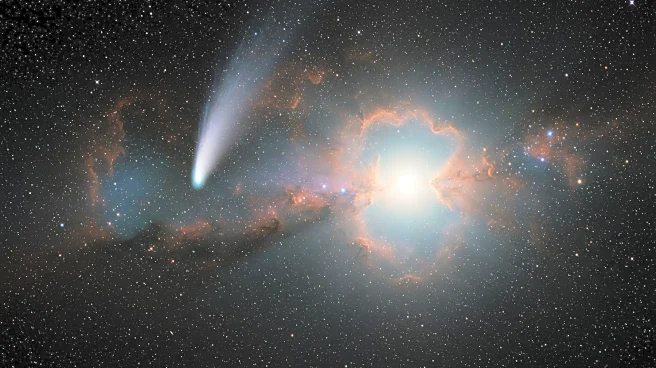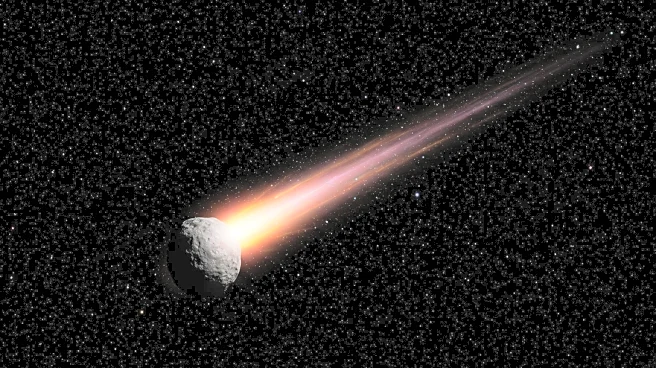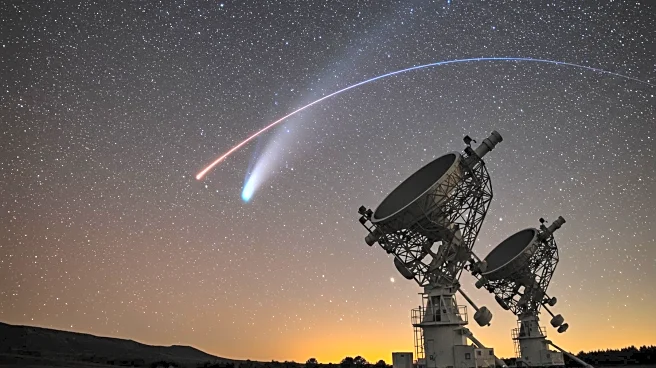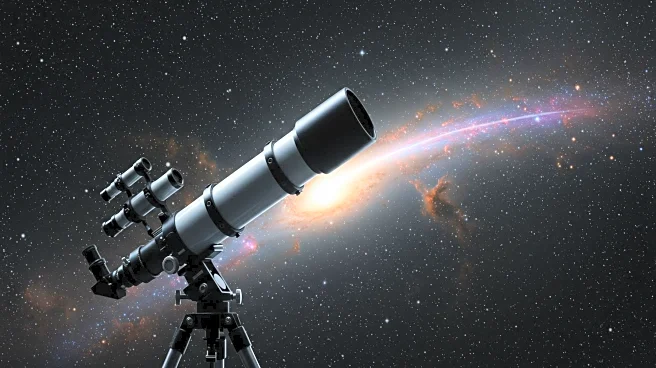What's Happening?
NASA's Hubble Space Telescope has captured the clearest-ever image of the interstellar comet 3I/ATLAS, providing new insights into its size and physical properties. The comet, traveling at 130,000 miles per hour, is the fastest solar system visitor ever recorded. Hubble's observations estimate the comet's nucleus to be between 1,000 feet and 3.5 miles in diameter. The comet's dust plume and tail were also observed, resembling the behavior of Sun-bound comets from our solar system. This interstellar visitor originated from another solar system within the Milky Way galaxy.
Why It's Important?
The sharp image of 3I/ATLAS enhances our understanding of interstellar objects and their characteristics. This discovery is part of a previously undetected population of objects that are now observable due to advanced sky survey capabilities. Understanding these interstellar visitors is crucial for refining models of comet behavior and the dynamics of objects traveling through space. The data collected by Hubble and other NASA missions will contribute to the broader knowledge of near-Earth objects and cosmic phenomena.
What's Next?
3I/ATLAS will remain visible to ground-based telescopes through September before passing too close to the Sun to observe. It is expected to reappear by early December. Continued observations by NASA's fleet of space telescopes, including the James Webb Space Telescope, will provide further insights into the comet's chemical makeup and physical properties.
